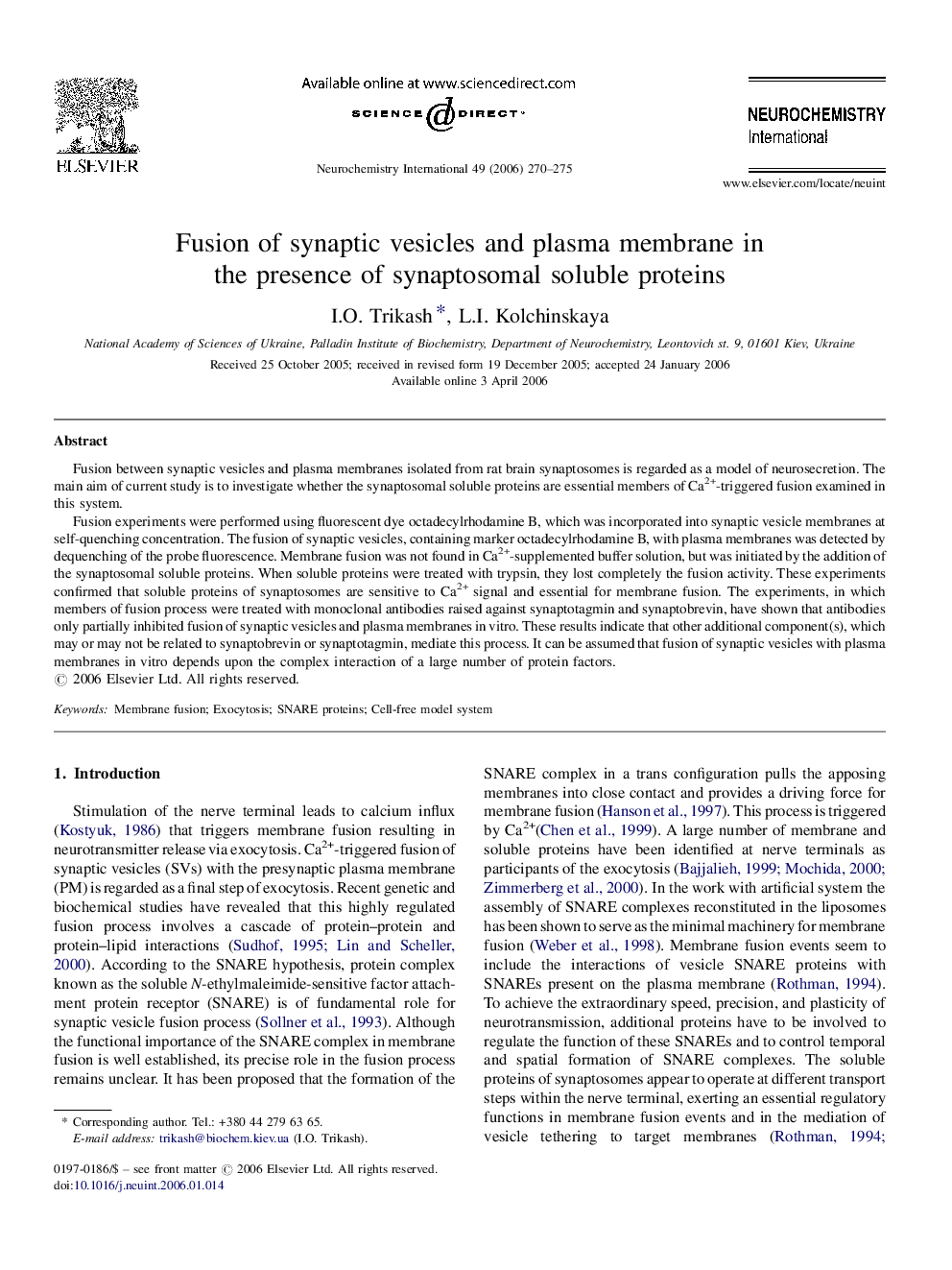| Article ID | Journal | Published Year | Pages | File Type |
|---|---|---|---|---|
| 2202282 | Neurochemistry International | 2006 | 6 Pages |
Fusion between synaptic vesicles and plasma membranes isolated from rat brain synaptosomes is regarded as a model of neurosecretion. The main aim of current study is to investigate whether the synaptosomal soluble proteins are essential members of Ca2+-triggered fusion examined in this system.Fusion experiments were performed using fluorescent dye octadecylrhodamine B, which was incorporated into synaptic vesicle membranes at self-quenching concentration. The fusion of synaptic vesicles, containing marker octadecylrhodamine B, with plasma membranes was detected by dequenching of the probe fluorescence. Membrane fusion was not found in Ca2+-supplemented buffer solution, but was initiated by the addition of the synaptosomal soluble proteins. When soluble proteins were treated with trypsin, they lost completely the fusion activity. These experiments confirmed that soluble proteins of synaptosomes are sensitive to Ca2+ signal and essential for membrane fusion. The experiments, in which members of fusion process were treated with monoclonal antibodies raised against synaptotagmin and synaptobrevin, have shown that antibodies only partially inhibited fusion of synaptic vesicles and plasma membranes in vitro. These results indicate that other additional component(s), which may or may not be related to synaptobrevin or synaptotagmin, mediate this process. It can be assumed that fusion of synaptic vesicles with plasma membranes in vitro depends upon the complex interaction of a large number of protein factors.
